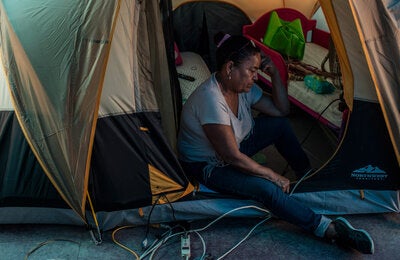

The rapid aging of Latin America's population over the next half-century will make it difficult for countries to expand health and social protection without significant increases in social spending, says a new World Bank study, Population Aging: Is Latin America Ready?
Washington, D.C., 27 May 2011 - The rapid aging of Latin America's population over the next half-century will make it difficult for countries to expand health and social protection without significant increases in social spending, says a new World Bank study, Population Aging: Is Latin America Ready?, edited by Daniel Cotlear, lead economist in the bank's Health, Nutrition , and Population Unit.
{slideshow}107,300,199,r{/slideshow}Cotlear presented the book's major findings today at the Pan American Health Organization/World Health Organization (PAHO/WHO).
Due to gains in life expectancy and declines in average family size, population aging has been the dominant demographic trend in Latin America over the past half-century and will remain so over the next half-century. This presents major challenges for social and economic policy.
"Aging will take place much faster in Latin America than in developing countries," said Cotlear. "Latin America will do in a few decades what it took 100 years for France to do."
These demographic changes, however, will in themselves have less fiscal impact in Latin America than will changes in policy. If current levels of coverage in health and social protection were to remain "frozen," healthcare spending would have to increase only about 1 percentage point of GDP by 2050, while pension spending would have to rise about 3 percentage points, Cotlear said.
On the other hand, if Latin American countries move closer to the universal protection models favored by OECD countries, healthcare spending will have to increase by over 3 percentage points of GDP and pensions by about 2.5 points by 2050. Advocacy by and for the growing number of older adults will likely create new pressure for expanded benefits. "In the coming years, there will be a huge demand for health services," Cotlear said.
Health spending of at least 6 percent of GDP has been required in virtually all countries that provide universal health care, said Rubén Suarez, PAHO senior advisor on public policies, regulation, and health financing. So far, "Latin America is far below that average," said Suarez.
Enrique Vega, PAHO advisor on healthy aging, said it was crucial to ensure that the Region's longer life spans were also healthier life spans, with minimal illness and disability.
In the medium term, Latin America's older age structure will be conducive to strong economic growth and make it possible to increase social investments, said Matilde Maddaleno, PAHO senior advisor on healthy life course.
"In the next 40 years, the demographic situation in our region will provide a window of opportunity in which the economically active population will grow more rapidly than the dependent population. Only through adequate social and health investments will it be possible to achieve the kind of healthy and active aging that will mean a lighter economic burden in the future," said Maddaleno.
Link



